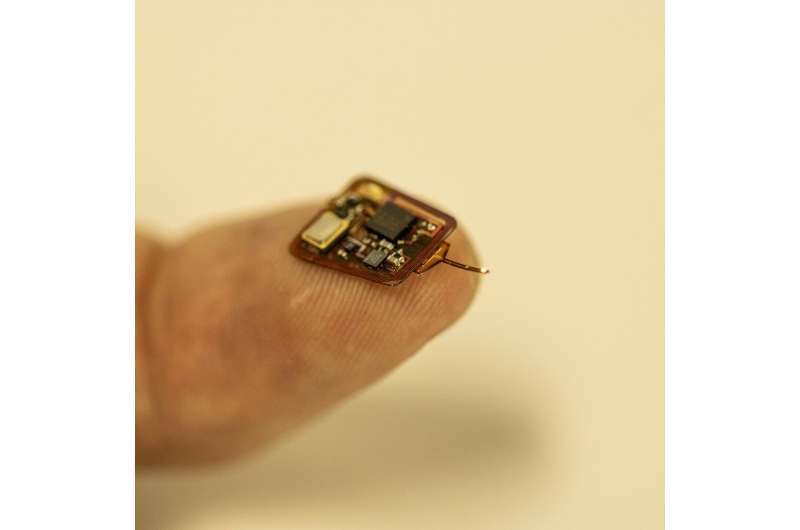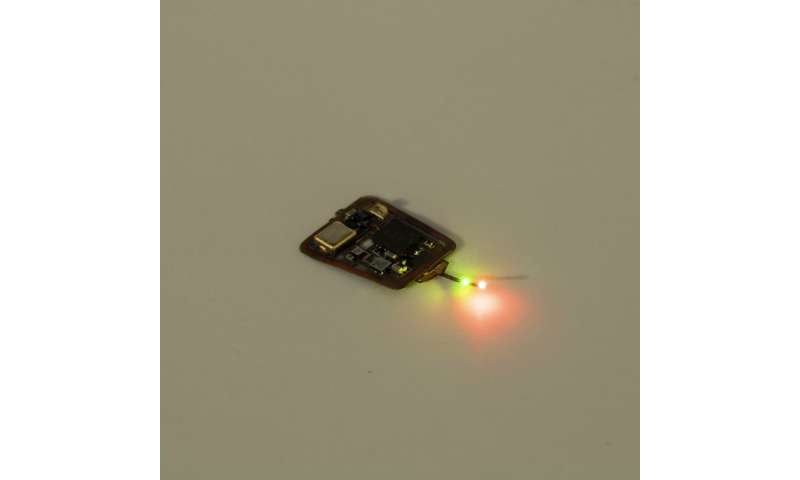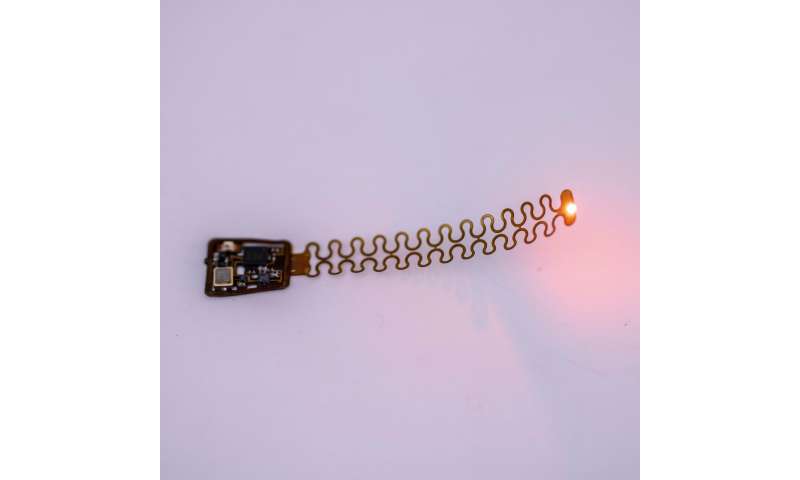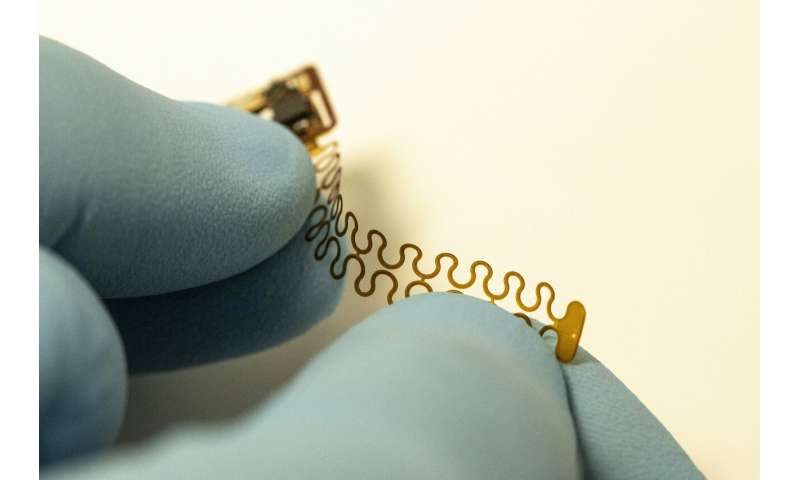March 11, 2019 report
Tiny implantable device can measure tissue oxygen levels inside the body

An international team of researchers has developed a tiny implantable device that can measure the oxygen level of internal tissue in a living animal. In their paper published in the journal Science Advances, the group describes how their device was made and how well it worked when tested.
The researchers note that the need to accurately measure oxygen levels in body tissues is important for many clinical applications because it applies to so many physiological and pathological processes. Furthermore, they note that a better way to monitor oxygen levels in living animals would provide a new avenue for research into oxygen-mediated processes. They also note that current methods of testing oxygen levels in both humans and animals are limited due to the necessity of a tether and limited depth of placement options. To overcome these problems, the researchers have developed a device that can function inside of a living animal without the need for a tether—and because it is so small (1 square centimeter—about the size of a fingernail) and light (80 milligrams), it can be placed nearly anywhere in the body, including the brain.
The researchers made the device by attaching a thread-like probe to a tiny circuit board—the probe was opto-electronically sensitive and had two microdiodes which emitted red or green light. It also had a micro-detector that read and transmitted the intensity of light directed through a tissue sample. Infrared radiation was used to power the device as well as to transmit data. Data from the device was sent to a receiver plugged into a desktop computer where it was analyzed. The rest of the device consisted of an antenna and other electronic components used for converting ambient infrared radiation to a power source and for transmitting data from the device to the external source.
The researchers tested the device by using it with artificial tissue and blood, and then by implanting it in the skulls of test mice. They report the device worked as envisioned and did not present any health risks to the mice.
-

Wireless, battery-free optoelectronic implants for in vivo, local tissue oximetry. Credit: Philipp Gutruf -

Flexible wireless oximetry implants with miniaturized optical components and small electronics. Credit: Philipp Gutruf -

Flexible wireless oximetry implants with miniaturized optical components and small electronics. Credit: Philipp Gutruf
More information: Hao Zhang et al. Wireless, battery-free optoelectronic systems as subdermal implants for local tissue oximetry, Science Advances (2019). DOI: 10.1126/sciadv.aaw0873
© 2019 Science X Network



















